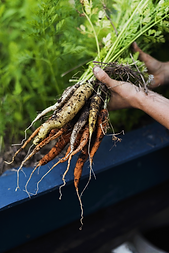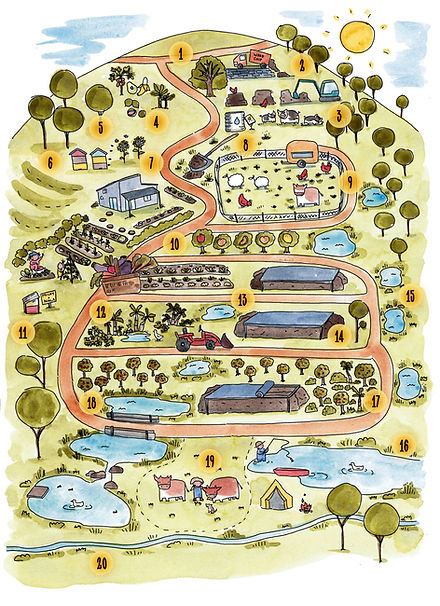
Gardening Tips
permaculture and homesteading tips to get the most out of your garden
You don't have to have a tonne of outdoor space or perfectly built raised garden beds to get quality food growing year round. While the concept of rewilding may initially sound like a return to hardcore hunting and gathering, in today’s modern times perhaps its essence is more a reconnection to the natural environment that supports us all. It's a yearning to grow and make your own, to be self-reliant or ‘less dependent’. Imagine a life where individuals and families strive to towards minimalism and return to village-style living where bartering, sharing with others and pay-it-forward attitudes are more ingrained.




Follow along as we bring you practical hands on gardening support and inspiration. Don't forget to sign up to the mailing list to get your free worm guide and get started!

Compost is life
Rich soil, healthy garden, full vitality
It is possible to create living soil in your own backyard. Healthy soil = Healthy plants.
Composting is all about creating the right balance of ingredients and managing the right conditions for organic matter to decompose and return to the soil, just as they do in nature. Finished compost is dark and rich in colour with a pleasant, earthy smell and is easily applied to the garden by working into the soil or blending through seed-raising and potting mixes.
Compost plays a huge role in our lives here on the farm. There is always at least one large hot compost pile cooking away. This is mostly made from Large loads of dairy manure and local woodchip, watered by a high-volume hose and aerated by turning with the baby tractor or excavator.
The good news is there are composting methods suitable for everyone, no matter where you live.
What can I compost?
There is a long list of items suitable for the compost, the general rule is if it came from a natural source, it is suitable for composting.
The key components are:
-
Carbon- includes brown or dry materials.
-
Nitrogen- includes green or moisture retaining materials.
-
Oxygen or aeration aids the decomposition process and can be achieved by turning, forking, or tumbling.
-
Moisture in the right amounts to maintain activity without being too wet and causing anaerobic (no air) conditions.
-
Bacteria and Fungi help break down the material and help to decompose woody material.

Seed Saving
sow your best growers every year, and save money!
Saving your own seeds involves collecting the seeds from your home-grown, edible vegetables and herbs. You allow the best plants from certain produce to flower and 'go to seed' and then you collect the pods. Saving seeds provides any gardener with great value, and saves you money you would have spent buying seedlings or new seeds. Plus, you reduce the negative impact associated with the packaging, distribution and production of conventional seed or seedlings. Seeds that you save are broken up into three types:
Dry seed crops
Dry seed crops are plants that flower then produce seeds. For example, broccoli and beets. Harvest as soon as the seed is brown and dry and store them in a paper bag or bowl.
Wet seed crops
These are seeds that are wet as they have been collected from inside mature fruit of things like pumpkins, zuchini's and cucumbers. Rinse well and dry on paper towel before storing.
Ferment
Some seeds, such as tomatoes, need to be fermented before drying. Soak them in water and leave for a few days, stirring regularly before you strain and dry them for storage.

Our garden
Take a little tour of our garden
Browse the photos, and go on a walk around our homestead with me. If you want regular updates about our produce and how our garden is growing check out the facebook group where I regularly share tips, crop information and updates about how our little patch of eden is coming along.
Permaculture Farming Design Support

Artwork by Brenna Quinlan for the Homegrown Healthy Living book
If you’ve ever looked at your land and wondered where to start, you’re not alone. Good design is the foundation of a productive and low-stress garden or farm. Whether you have a few raised beds, a suburban backyard, or a few acres to work with, permaculture principles can help you design a system that makes sense for your space, your time, and your goals.
Our Permaculture Farming Design Support offers practical, down-to-earth guidance to help you plan your property so that water, soil, plants, and animals all work together. We focus on simple systems that are easy to manage and grow over time.
You’ll learn how to:
-
Read your landscape and understand natural water flow
-
Choose the best layout for gardens, animals, and compost systems
-
Build healthy soil through composting and worm farming
-
Create a self-sustaining cycle that reduces waste and increases yield
Whether you’re just starting out or refining an existing setup, we’ll help you find the confidence to design a space that works with nature, not against it.
We can help with one on one mentoring and design advice, workshops and even coordinating earthworks. Get in touch to find out how we can help you get rolling in the real world.












